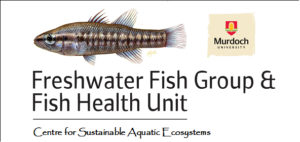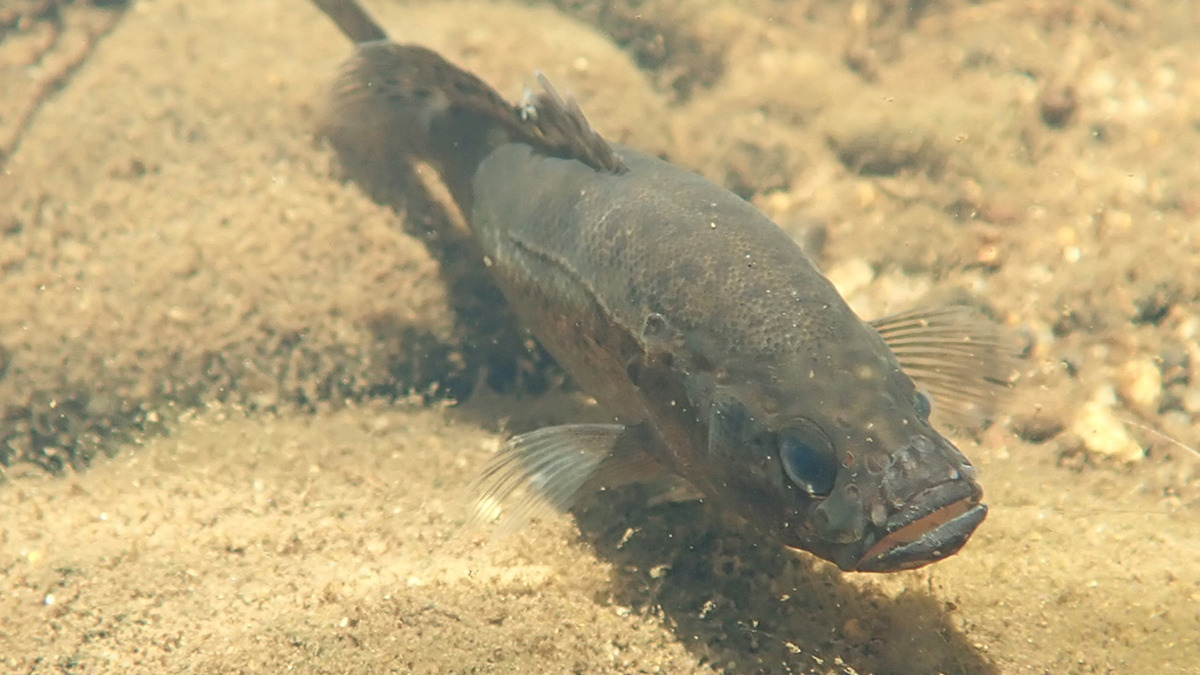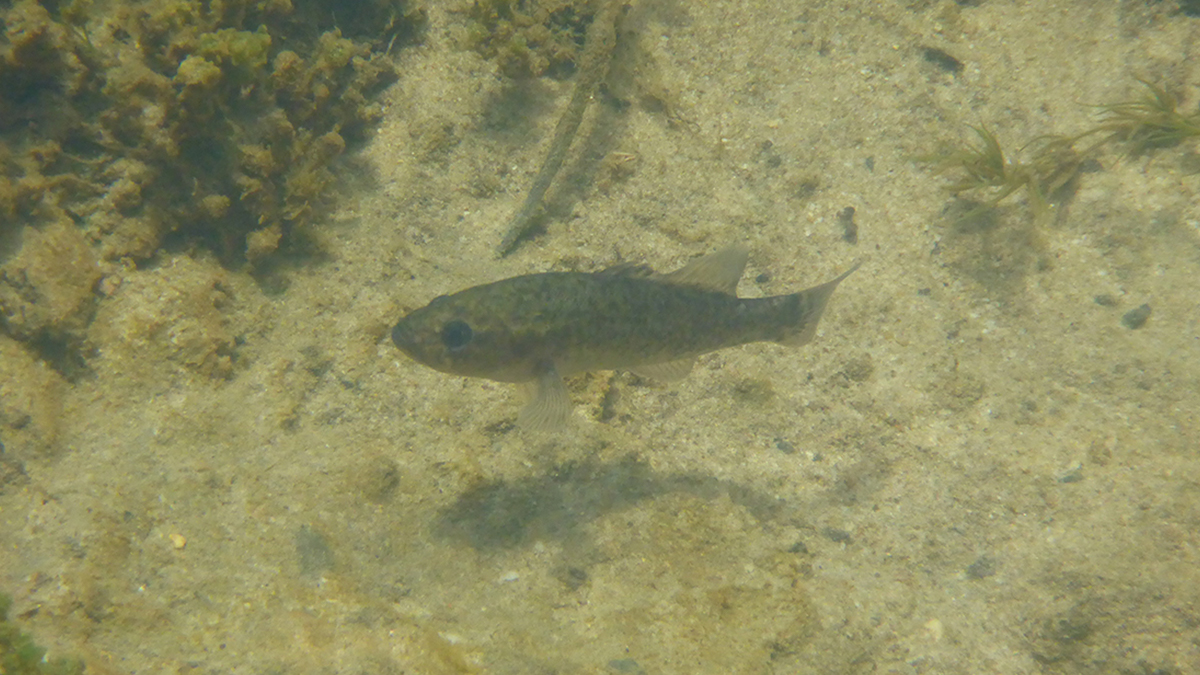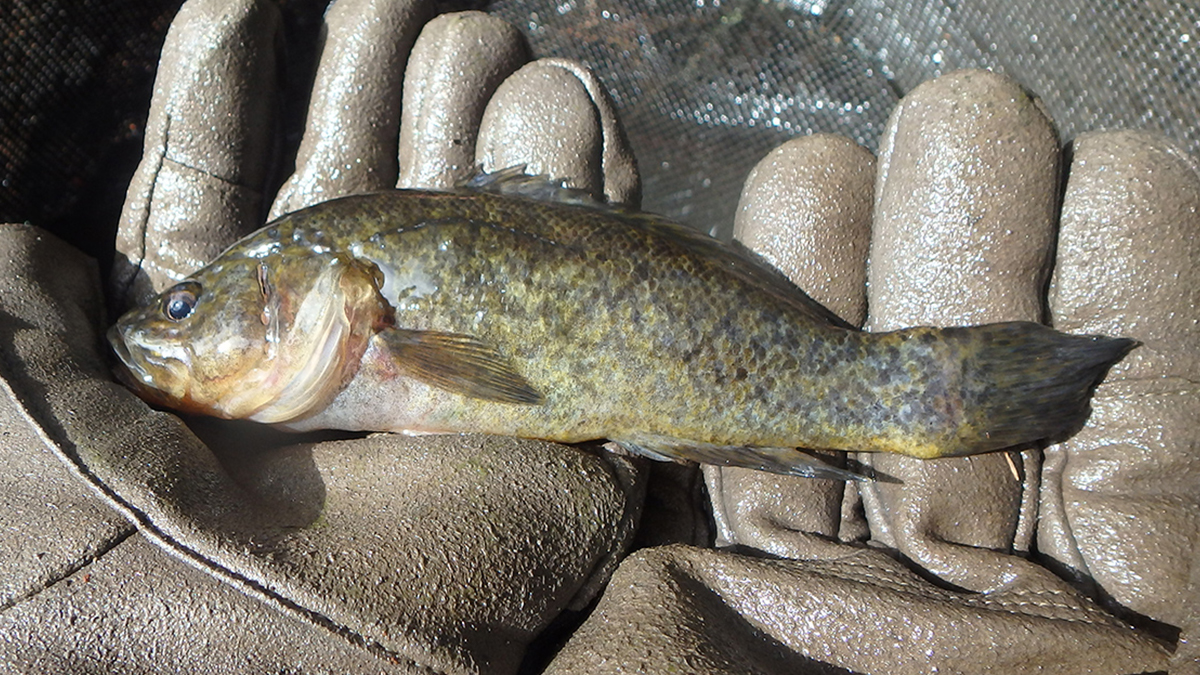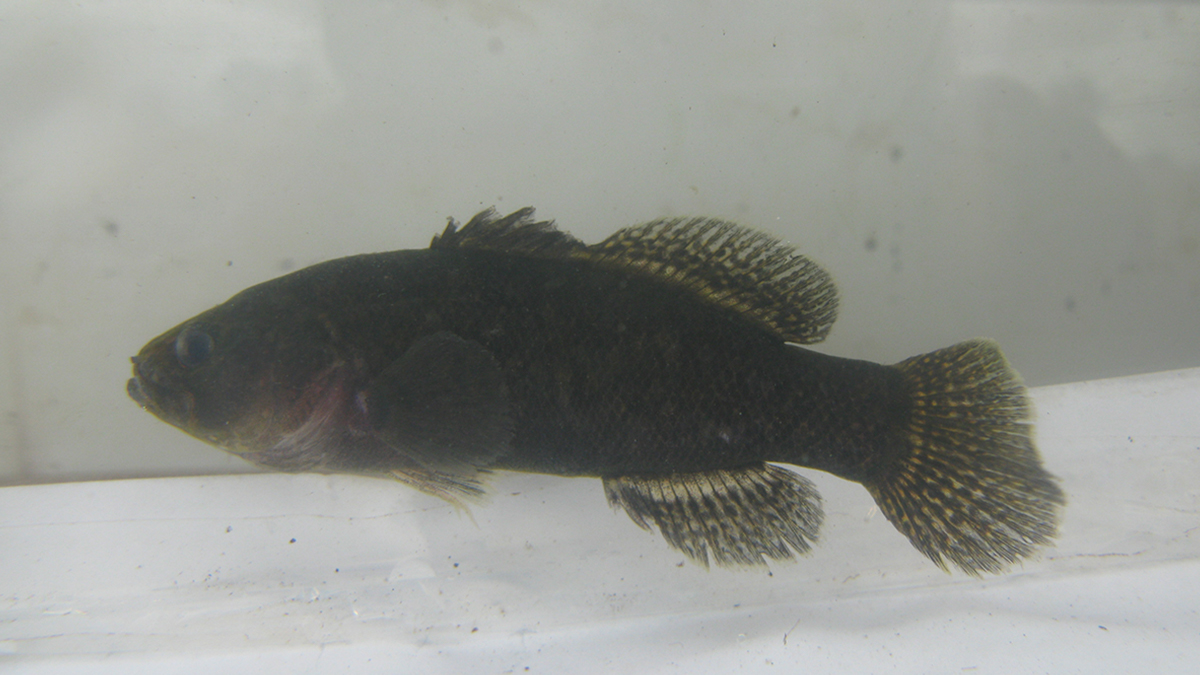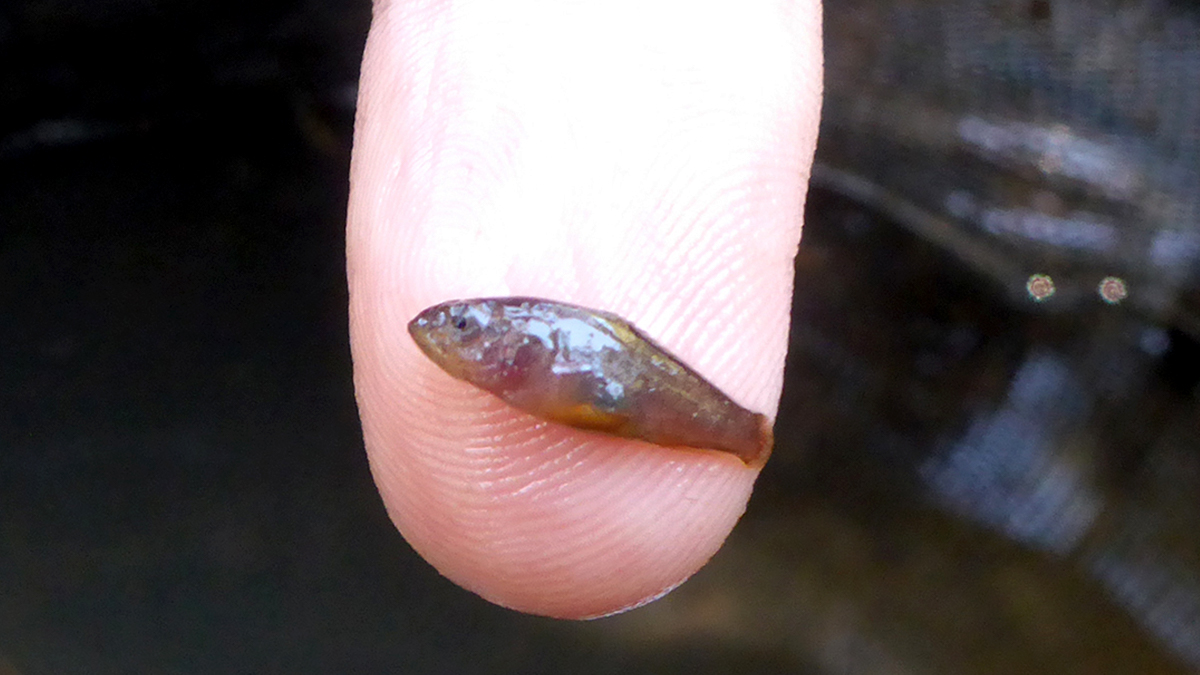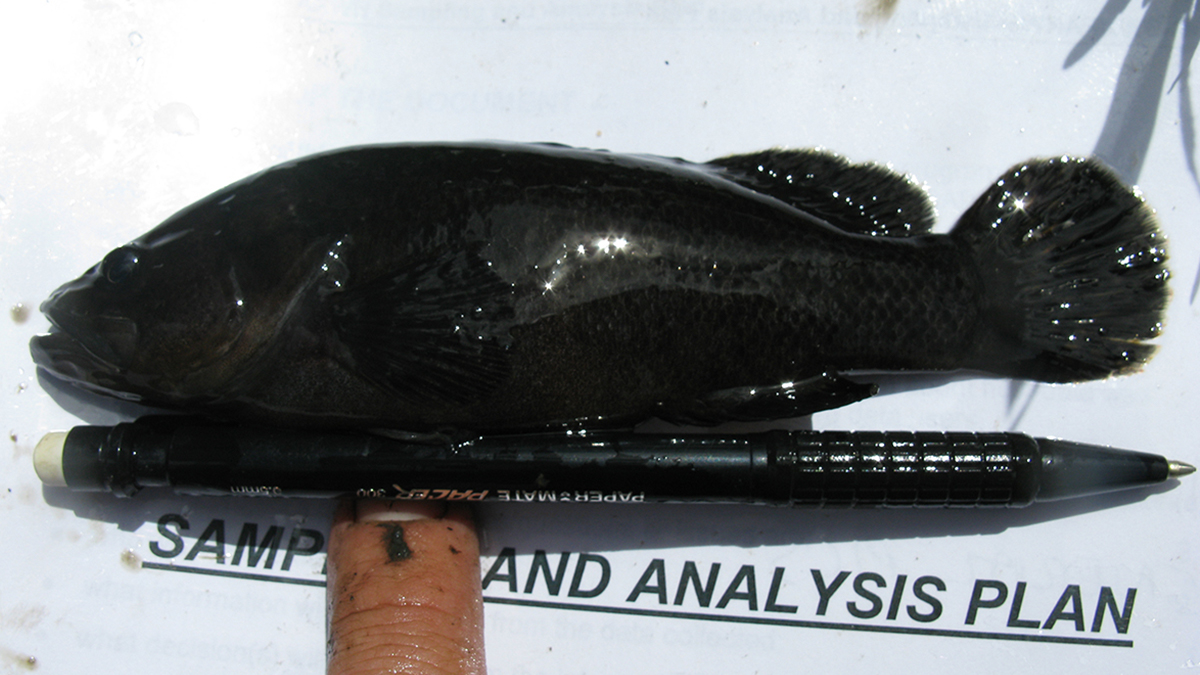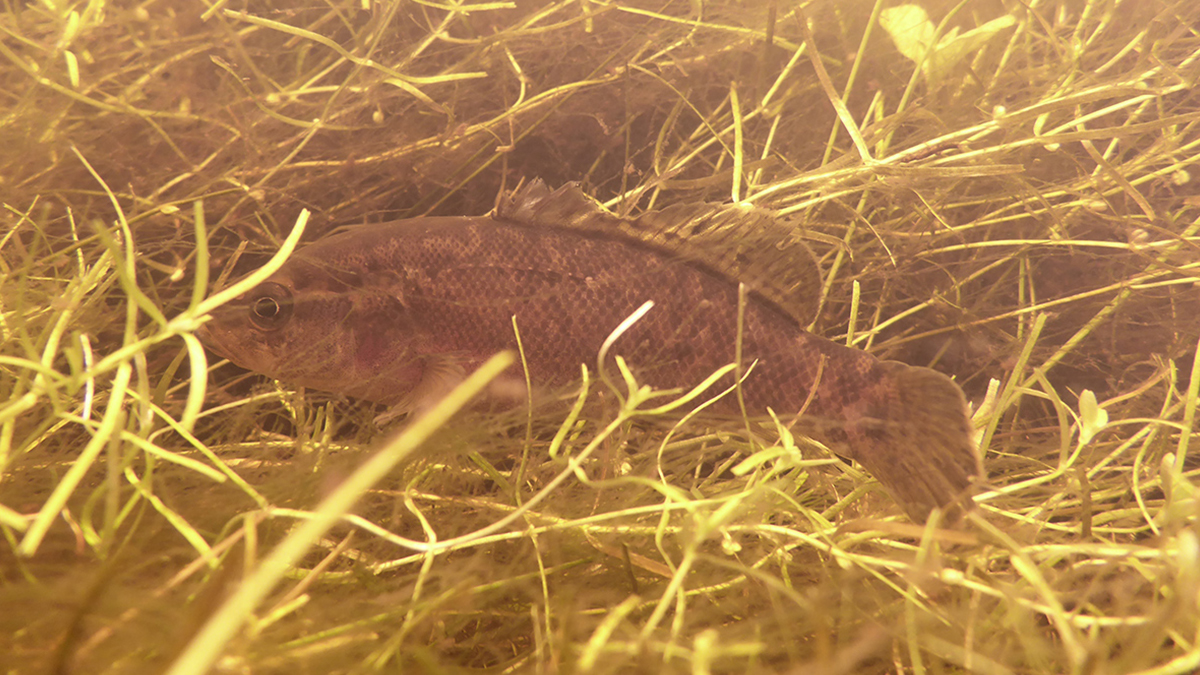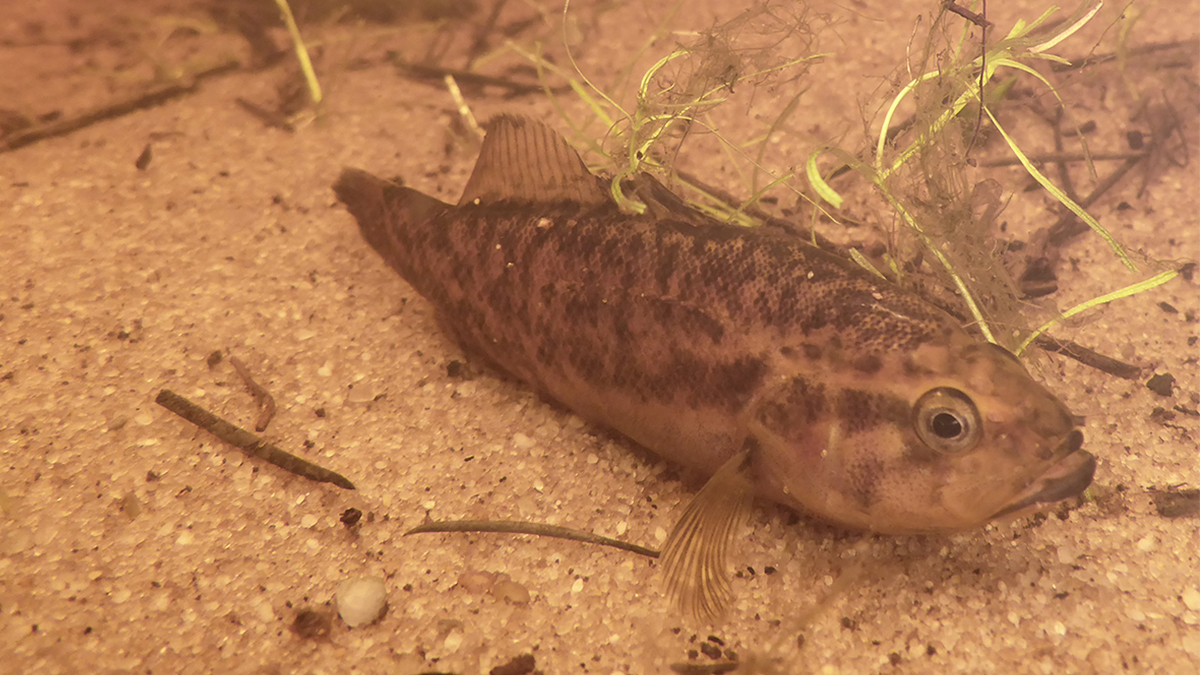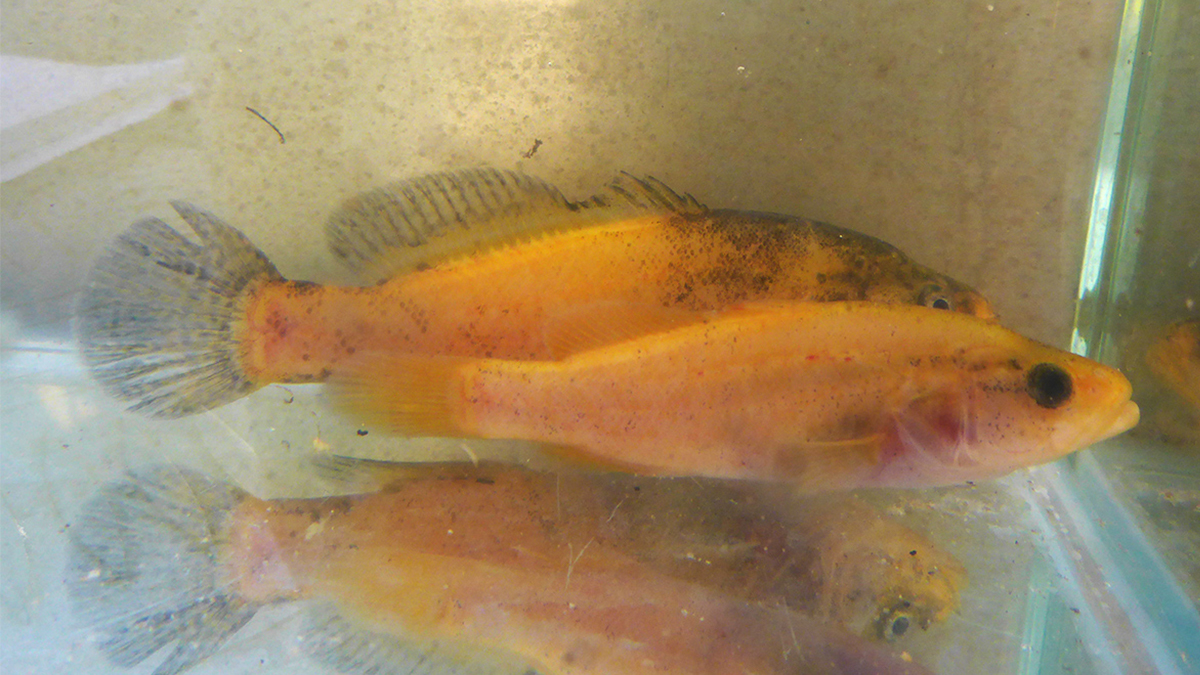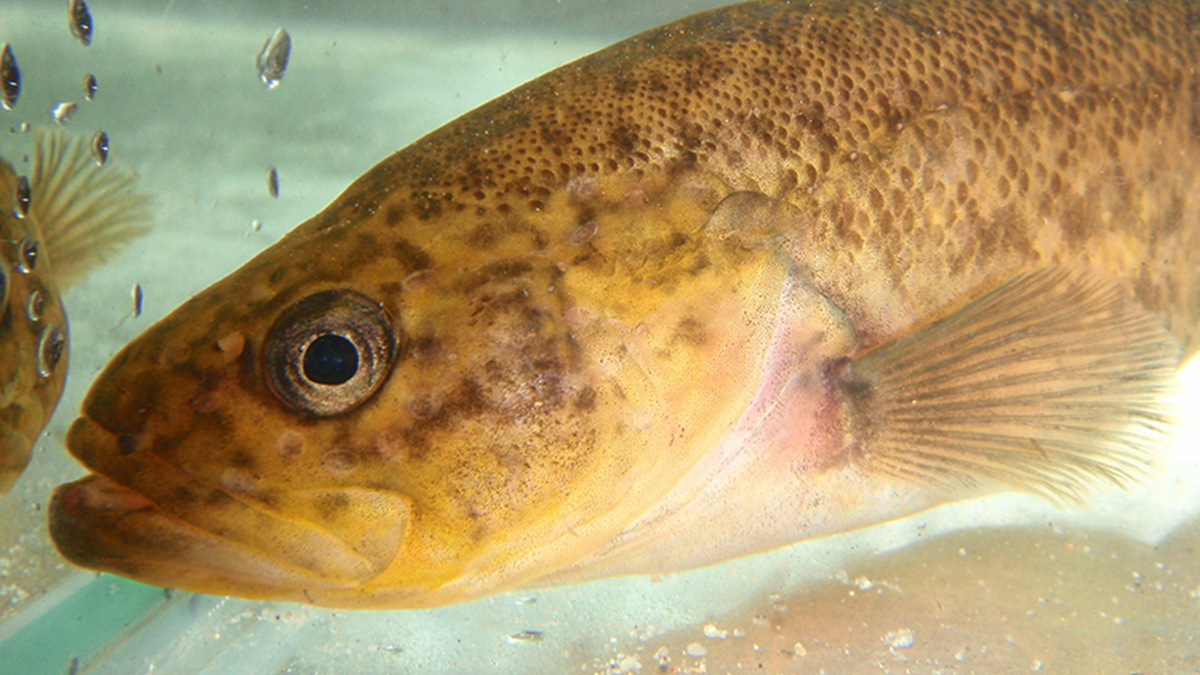Nightfish - Bostockia porosa
This page was created in partnership with the Freshwater Fish Group and Fish Health Unit at Murdoch University
Identification
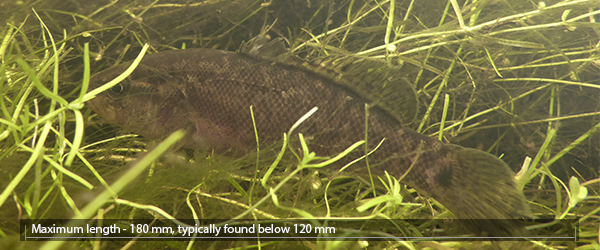
A distinctive fish, resembling a miniature cod.
It has a large mouth and distinctive pores on its head, and is typically deep olive purple to black to dark-brown when first caught, though can be become light-brown with mottled dark-brown pattern when held in lighter environments.
It is often compared in appearance to the Murray Cod (east coast of Australia), which is in the same family and can grow to over 100 kg and 1.8 m (an order of magnitude larger than the nightfish!).
Mature females have orange ovaries visible through the ventral surface, and mature males have opaque testis that are also visible through the ventral surface.
Distribution
Widespread and common between the Hill River (Jurien Bay) and the Kalgan River (near Albany), however as adults typically shelter through the day (hunting at night) they are rarely seen (cryptic), although juveniles conversely, feed during the day.
Habitat
Prefers still and slow-moving waters with complex instream habitat (rocks and woody debris).
Biology
They are a solitary ambush predator, preying primarily on insects, crustaceans, gastropods and small fish.
Males reach maturity at the end of their first year, and females at the end of their second year. Mature adults move upstream into small tributaries with the onset of winter rains, generally breeding between August to September.
Lifespan is about 6 years.
Further information
Contact the department’s River Science team, or the Murdoch Freshwater Fish Group via email: fish@murdoch.edu.au, or go to their website: www.freshwaterfishgroup.com
